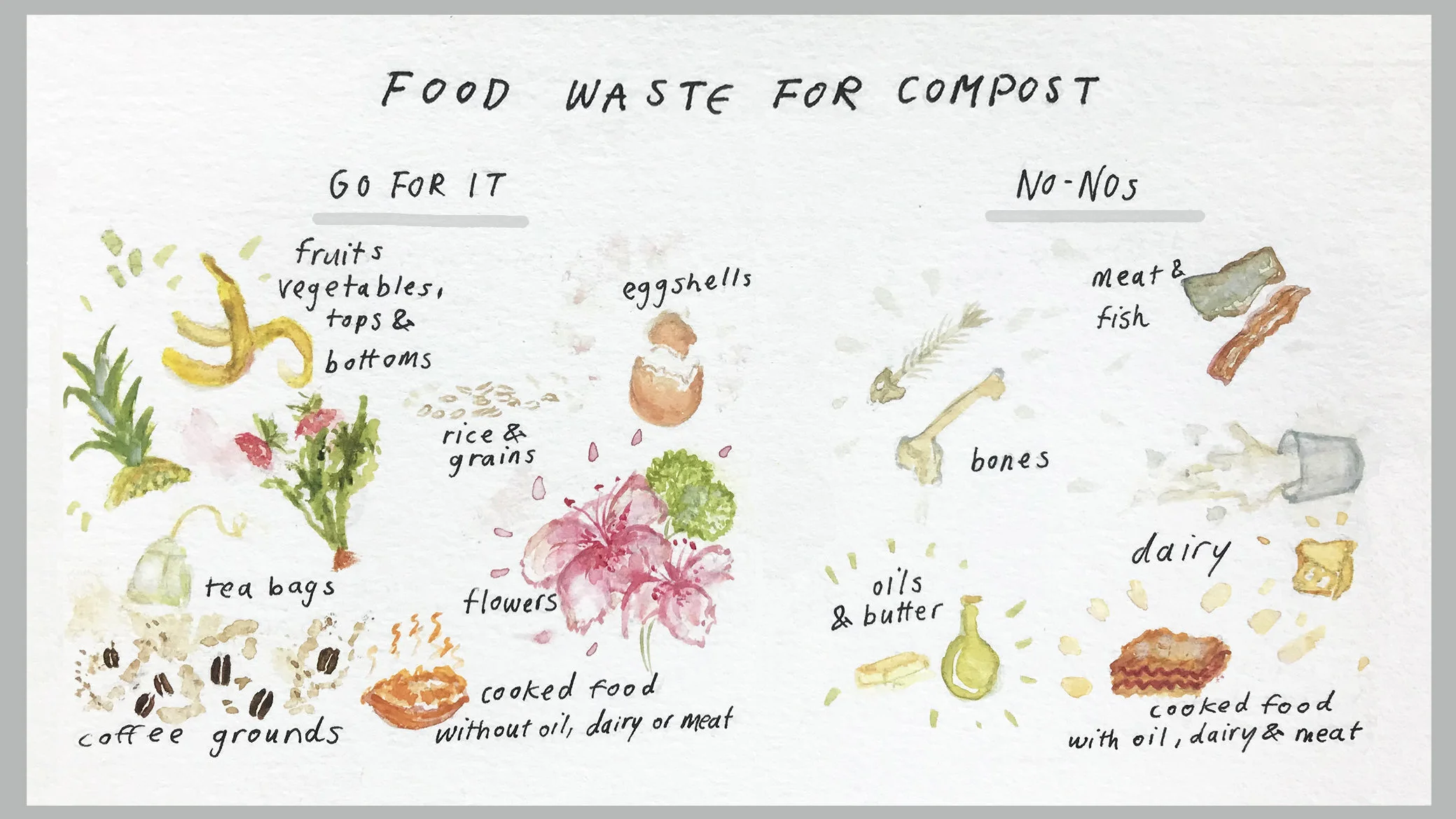HOW TO COMPOST [INDOORS] DURING LOCKDOWN
HELPING THE WORLD GO ROUND.
By LOGAN VERLAQUE
This past week, New York City stopped its curbside pick up of compost, and has instead asked composting residents to discard all food scraps with their regular trash. Although the Sanitation Department cited budget cuts, halting a program like this has long-lasting consequences. The EPA estimates that 22% of solid waste that enters landfills is food. Composting is a great way to reduce landfill waste, and therefore decreases methane emissions from such landfills. Composting at home is not hard and will provide you with nutrient rich soils to fertilize your plants all the while reducing your carbon footprint.
Read on to see how we’re composting indoors.
“It really allows you to start seeing food scraps not as something you toss in the trash, but something you can return to nature with your own hands.”
Step 1: Collect your scraps
Fruits, veggies, flowers, and coffee grounds are all great materials to begin composting with. You’ll want to avoid any meats, dairies, or fats as they can attract rodents and insects, which you nor your compost bin want!
STEP 2: STORE YOUR SCRAPS
Once you know what you can and cannot compost, begin to store the discarded food waste in a bin. You can also store them in the freezer to safe guard against any smells that may be emitted.
step 3: begin the process with a cardboARD BOX
We’ve been following a method we learned about via Hiroko Tabuchi. Tabuchi recommends you obtain a large cardboard box, coco peat, hardwood ash, and a cloth cover (all available on Amazon). Add 3 parts coco peat to 2 parts ash to the box. The box will not smell due to how the compost decomposes and the ash will prevent any liquid from forming.
step 4: Add your scraps and mix regularly
Once your box is prepped, you’re free to begin adding in your food waste as needed. Stir the contents of the box often. When it gets too full, remove some of the compost and gift it to your house plants…they’ll thank you for the homemade fertilizer later.
Note:
If you are following a more traditional composting method, perhaps involving a compost bin, you’ll want to follow a layering method for composting your materials. The brown materials will provide a base with ample aeration, and on top of those you can place the green materials. Then rotate or stir the compost weekly to keep air flowing through the pile.
*Green materials: kitchen scraps, grass clippings, seaweed, weeds
Brown materials: dry leaves, wood chips, straw or hay, pine needles, twigs, sawdust, paper (newspaper, paper plates, napkins, coffee filters; avoid colored paper), cotton fabric, corrugated cardboard (no plastic or glossy materials)















